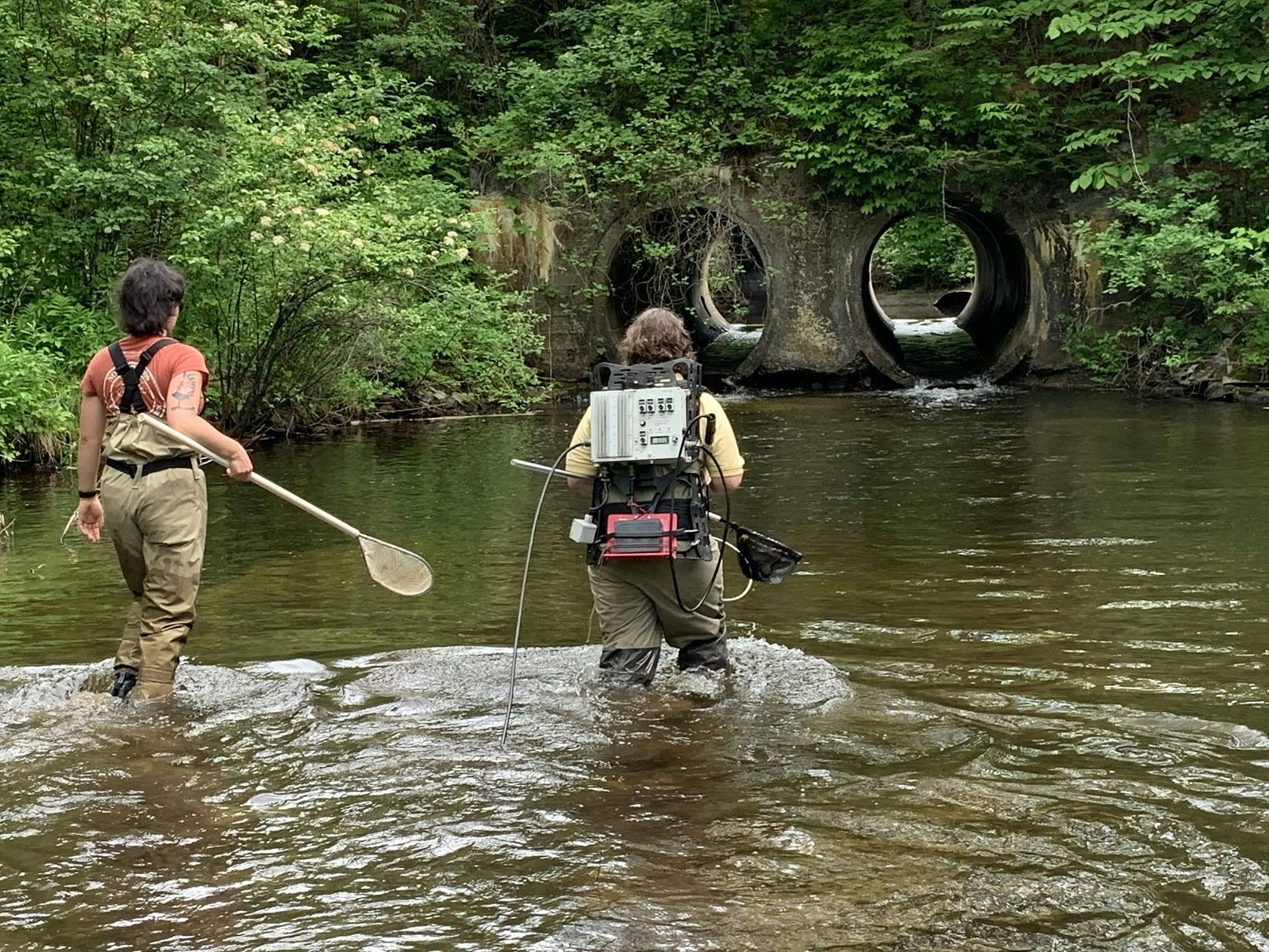Bridges and Culverts

Caledonia County Conservation District supports the inventory, design and replacement/retrofit of undersized or inadequate stream crossing structures. Working closely with the VT Agency of Transportation, US Fish & Wildlife Service, and VT Department of Fish & Wildlife, over 500 bridges and culverts have been inventoried in Caledonia County to better understand their impacts on habitat, fish passage and stream geomorphic conditions.
Undersized culverts create plugged inlets and perched outlets. When a culvert is undersized, too much water and debris attempts to pass through the structure. Water and debris will back up, create pressure and/or plug the inlet of the culvert which creates erosion and washout. Also, an undersized culvert creates a powerful flow of water from the outlet of the structure, much like putting your thumb over a garden hose. This powerful flow of water creates erosion at the outlet, typically scouring a pool and eventually causing a “perched” culvert that is sitting above the stream bed. Fish are no longer able to pass through these structures, and the structures become susceptible to washout.
On a larger scale, an undersized bridge has a similar impact to rivers as culverts do to streams. When a bridge is undersized it creates a channel constriction where too much water, debris or ice attempts to pass through the structure. This can cause ice and debris jams leading to a channel avulsion around the structure. Downstream of an undersized bridge you’ll often see a scoured channel.
The town of Walden replaced two culverts with support from the Caledonia County NRCD, US Fish & Wildllife and Vermont Agency of Transportation. Both culverts were undersized, and were not able to pash fish. The culverts were in close proximity to each other on the same stream, so both were replaced to restore fish passage and improve flood resiliency.
Aquatic Organism Passage
Staff from US Fish & Wildlife Service are using electro-fishing equipment to determine the presence of brook trout as part of the effort with Caledonia County Conservation District to identify and replace undersized stream crossing structures that do not pass fish. This culvert in Groton, VT prevents brook trout from swimming upstream to cooler habitat where they can reproduce.
Over time, undersized culverts can cause changes in stream conditions that contribute to erosion, create flooding risks, and prevent fish from swimming upstream to cooler waters and habitat they need to survive. Caledonia County Conservation District has been teaming up with partners from the US Fish & Wildlife Service and VT Department of Fish & Wildlife to identify and prioritize culverts that are barriers to fish passage. The goal of these efforts is to work with communities to secure funding for the design and replacement of these structures to reconnect fish habitat and allow the stream to return to stable conditions. Often culverts that are not passing fish are eroding or in poor condition, so providing funding to replace these structures will help communities upgrade their infrastructure, improve resilience to flooding issues, and reduce maintenance costs.

